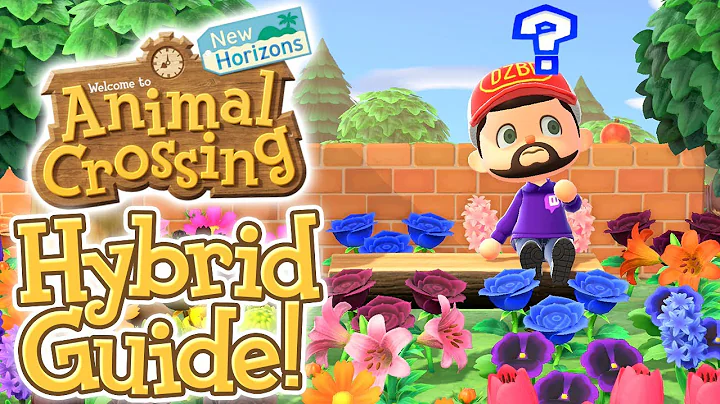The Ultimate Guide to Pigeon Breeding: A Step-by-Step Timeline
Table of Contents
- Introduction
- Step 1: Choosing the Birds
- Step 2: Mating Process
- Step 3: Egg Laying
- Step 4: Candling for Fertility
- Step 5: Hatching Process and Incubation Period
- Step 6: Banding the Chicks
- Step 7: Feeding the Chicks
- Step 8: Adding a Second Nesting Bowl
- Step 9: Vaccination
- Step 10: Weaning Process
- Conclusion
🐦 The Pigeon Breeding Timeline: A Step-by-Step Guide
Pigeon breeding can be an exciting and rewarding experience, but it can also be challenging if you don't have a clear understanding of the breeding timeline. In this guide, we will take you through each step of the process, from choosing the birds to weaning the chicks. So, grab your notepad and let's dive into the fascinating world of pigeon breeding!
Step 1: Choosing the Birds
The first and crucial step in the pigeon breeding process is selecting the right pair of birds. Look for healthy, active, and genetically diverse pigeons. Select a male bird (cock) and a female bird (hen) that show strong physical characteristics and desirable traits. Remember, the quality of the offspring depends on the quality of the parents.
Step 2: Mating Process
Once you have chosen the pair, it's time for them to mate. To ensure a successful mating, keep the birds in separate pens for about five days. This helps them get familiar with each other without direct interaction. After this period, you can put them together, and if they start displaying behaviors such as billing and cooing, you can be sure that they have mated.
Step 3: Egg Laying
After the birds have mated, the female pigeon will start laying eggs. The first egg is usually laid within a 10-day window after mating, followed by the second egg one to two days later. Make sure to provide a clean and comfortable nesting spot for the birds to encourage egg laying.
Step 4: Candling for Fertility
To check the fertility of the eggs, a process called candling is performed between days four and six after incubation. Take a flashlight or use the light on your phone to illuminate the egg. If you see prominent red blood veins, it indicates that the egg is fertile. If not, the egg is infertile, and you may need to remove it.
Step 5: Hatching Process and Incubation Period
The excitement builds as the eggs enter the incubation period, which lasts approximately 17 days. During this time, the parents will take turns sitting on the eggs to keep them warm. After the incubation period, the eggs will start hatching, typically with a one to two-day gap between the first and second chick.
Step 6: Banding the Chicks
When the chicks are about two weeks old, it's time to band them. The banding process involves placing a registered band on their leg. These bands serve as unique identifiers and help with tracking and identification when the birds mature. Ensure you use appropriate bands and follow the regulations of your local pigeon registries.
Step 7: Feeding the Chicks
As the chicks grow, their food and water intake will increase. Provide an abundant supply of food and water to meet their nutritional needs. The parents will play a vital role in feeding the chicks. Nonetheless, keep an eye on the chicks' development and make adjustments to their diet if necessary.
Step 8: Adding a Second Nesting Bowl
At around one week old, the chicks will start to see a significant increase in food and water intake. This is also the time when the birds may feel the need to nest again. To satisfy their nesting instinct, it's advisable to add a second nesting bowl. This will allow the parents to re-nest comfortably and efficiently.
Step 9: Vaccination
At approximately 24 days old, it is recommended to vaccinate the chicks for pigeon paramyxovirus (PMV) and paratyphoid. Consult with your local pigeon supply store to obtain the necessary vaccines. Follow the instructions carefully to ensure the health and well-being of your birds.
Step 10: Weaning Process
Between 28 to 30 days old, the chicks should start showing signs of independence and self-feeding. At this stage, you can begin the weaning process, gradually reducing the parents' involvement in feeding. Keep an eye on the young birds to ensure they are adapting well to their new feeding routine.
Conclusion
Congratulations! You've successfully navigated the pigeon breeding timeline, from choosing the birds to weaning the chicks. Remember, breeding pigeons requires patience, dedication, and a keen eye for observation. By following these steps and providing proper care, you can enjoy the wonders of new life and the beauty of raising healthy pigeons.
Resources:
Highlights
- Select healthy and genetically diverse pigeons for breeding.
- Observe mating behaviors like billing and cooing to confirm successful mating.
- Provide a clean and comfortable nesting spot for egg laying.
- Use candling to determine the fertility of the eggs.
- The incubation period lasts approximately 17 days.
- Band the chicks for identification purposes.
- Increase the food and water supply as the chicks grow.
- Consider adding a second nesting bowl for comfortable re-nesting.
- Vaccinate the chicks for PMV and paratyphoid as recommended.
- Gradually wean the chicks off parental feeding between 28 to 30 days old.
FAQ
Q: Can I breed pigeons from any pair of birds?
A: It is advisable to choose healthy pigeons with desirable traits to ensure the quality of the offspring.
Q: How long does it take for pigeon eggs to hatch?
A: The incubation period for pigeon eggs usually lasts around 17 days.
Q: When should I vaccinate the chicks?
A: Vaccination is typically recommended at around 24 days old to protect against PMV and paratyphoid.
Q: Do I need to separate the chicks from their parents after weaning?
A: The chicks can remain with their parents if they are adapting well to self-feeding and overall health.
Q: Can I reuse the nesting materials for a new breeding cycle?
A: It is best to provide fresh nesting materials for each breeding cycle to ensure cleanliness and hygiene.







